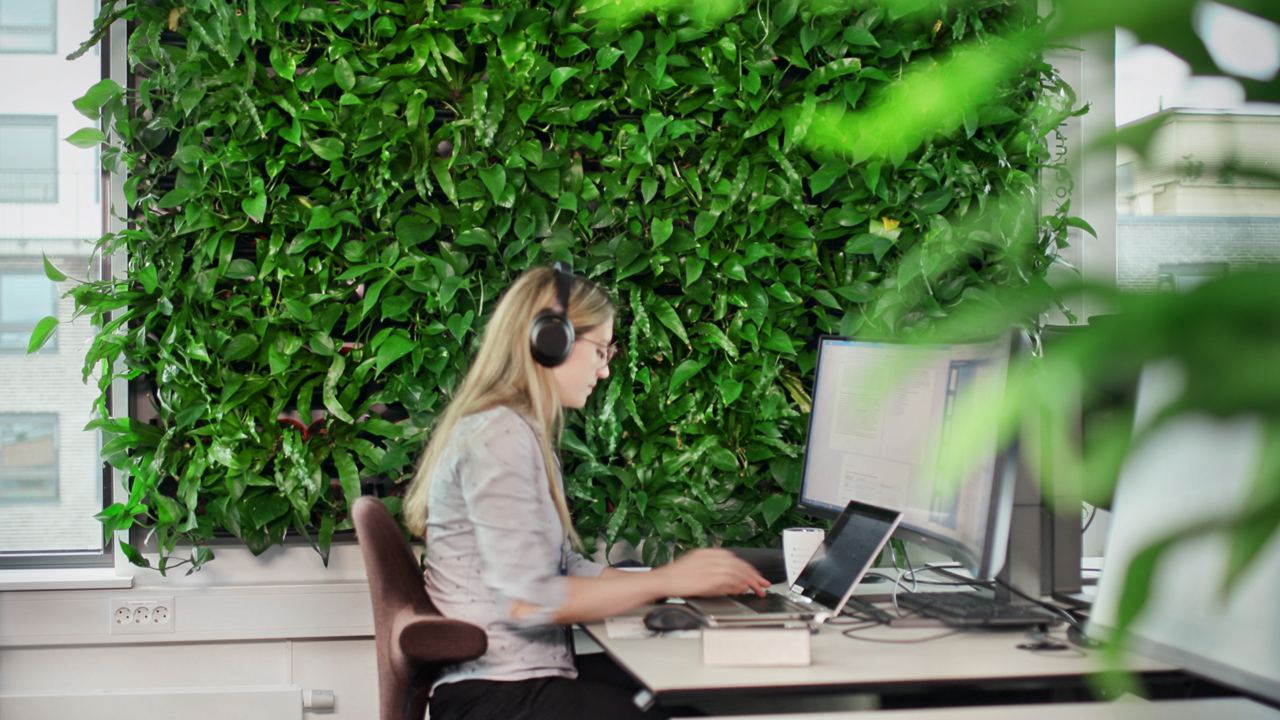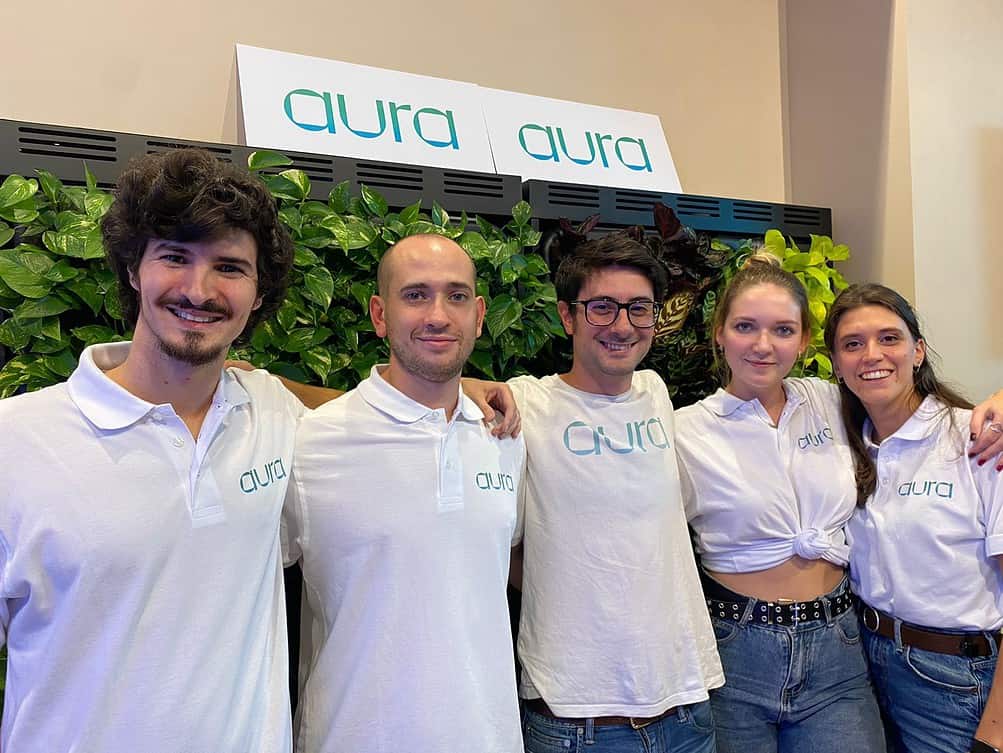
About Aura System
- Founders: Pietro Carloni, Aligi Marini
- Founded in: 2020
- Employees: 5
- Money raised: €155.000
- Ultimate goal: Build a better human environment.
Since the COVID-19 outbreak, we all got more familiar with the importance of breathing clean air. As the pandemic started, freshly graduated Pietro Carloni planned to leave Italy to work abroad. The virus changed it all for him too, and not necessarily in a bad way. Following months of job applications, he reached out to Aligi Marini, with whom he wrote his graduation thesis on the biofiltration of air. They asked themselves what would happen if they started their own company based on the research they conducted.
- Aura System has developed Sphera, a modular green wall that cleans the air and absorbs VOCs and particulate matter in minutes.
- Sphera uses phytoremediation and a unique substrate of coconut fiber and clay to filter pollutants from the air.
That’s how Aura System started. The company designed a modular green wall using plants to clean the air. Some of them can ingest air pollutants – valuable nutrients for them – improving the overall air quality of an indoor space. Sphera is their first product, targeting business spaces. Being a modular solution, a square meter of the breathing wall can purify a 25m² room. Carloni spoke to Innovation Origins for this installment of the Start-up of the Day series to talk about his company and the science behind their innovations.
How does Sphera work?
“Sphera is a plug-and-play breathing wall. It is made of modules with 16 installed plants, which grow on our patented substrate. Behind each module is a fan, forcing air to pass through the substratum, retaining and eliminating pollutants. To keep the correct moisture levels, Sphera features a hydroponic system, which distributes water to all modules.
Our natural substrate – we are currently patenting it – has high purifying qualities and sets us apart from other technologies. It can retain volatile organic compounds (VOC), common gases that paint and other materials release in the air. Sphera can absorb 80 percent of VOC in less than two minutes and all fine dust in less than fifteen.”
What does your substratum contain?
“It has coconut fiber and two selected kinds of clay. It matches well with water, ensuring plants have the right moisture level. This way, the air that comes out is also fresh. So far, only one study showed that this kind of system could make the air fresher in indoor spaces – the wall needs to be big enough to generate that effect. I like to say that breathing green walls might be the future air conditioners.”
What plants are we talking about?
“We mostly use Pothos, Calathea, and Philodendron, indoor plants that can all ingest VOC through phytoremediation. Moreover, they don’t need much care and sunlight to grow.”

What’s phytoremediation?
“Phytoremediation – or biofiltration – is the plants’ ability to purify the air with their roots. It has already been used to clear freshwater and soil. NASA itself researched the topic, selecting about twenty plants with purifying properties. Some air pollutants – such as sulfates and nitrates – are nutrients for plants, which absorb them through their roots.”
Are there any other advantages of having a breathing wall?
“Yes. The first one has to do with biophilia. In other words, nature’s positive effects on people’s mental and psychophysical conditions. Productivity increases by ten percent and cognitive capabilities are boosted by 100 percent. These effects are even more significant on children, whose immune systems can significantly benefit from plants. Plants emit many natural microorganisms that cannot be found indoors. When environments are too sanitized, these kinds of bacteria are killed, but they help our bodies to work better. For instance, poor air quality can lead to dermatitis, whereas maintaining contact with plants helps skin stay healthier.
Secondly, plants help to fight the so-called sick building syndrome. Roughly one out of two people is affected by it in Italy, causing nausea, headaches, and eye or throat irritations. Plants establish the right balance of microorganisms level in the air.

How are things going for Aura?
“It’s a good moment for us. We’ll hit the market next month after getting the required European certifications. In addition, we won the Mars Habitat Challenge, a prestigious technology contest, a few weeks ago.
Besides making an impact by scaling up and installing more Sphera, we will be the first ones in Europe to connect our green wall to the heating, ventilation, and air conditioning (HVAC) system. A study found that having plants as a pre-filter to the ventilation system can cut down maintenance and energy costs by 60 percent. HVAC uses the most power in buildings – while being the highest source of pollution. We plan to recycle indoor air without inserting it from outdoors. HVAC cleans the outside air before emitting it inside, using lots of energy. Biofiltration uses less power, is sustainable, and generates fewer byproducts.”

Are you fundraising?
“Yes, we are conducting a €500.000 seed round to scale production.”
Do you plan to launch a home version of Sphera?
“We are already developing a home version of Sphera. Since it’s a modular system, we are scaling the current version to a two-module one. It will be called Sphera Mini. The wall will have an app to make it smart and controllable. To support it, we might launch a Kickstarter campaign later this year.”

